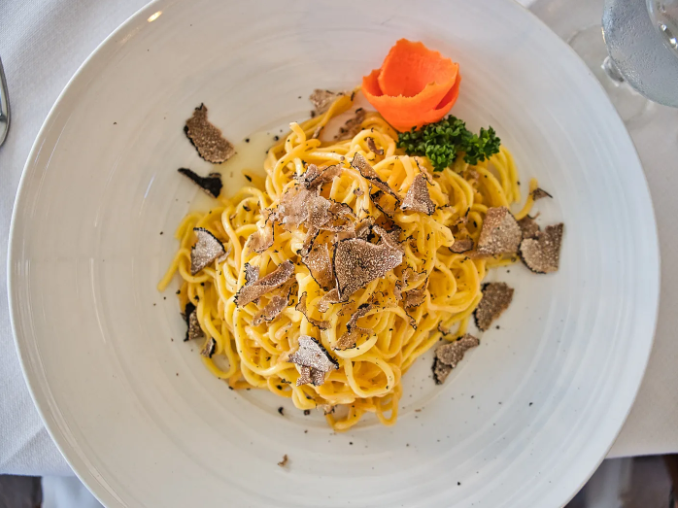Plastic Reduction: companies leading the way towards plastic usage reduction
It is no secret that the issue of plastic has become one of the most pressing challenges for our planet today. The massive production and indiscriminate use of plastics have had a devastating impact on our ecosystems, threatening marine life, contaminating water, and affecting our health. However, amidst this concerning reality, there is a ray of hope. In the face of this challenge, many companies have decided to take bold measures to reduce their dependence on plastic and find sustainable alternatives to maintain their business success. Let's take a look at some of these pioneering companies and the solutions they are implementing to address this crisis. Patagonia: Towards a Circular Economy The renowned outdoor clothing brand, Patagonia, has long been a benchmark for sustainability and environmental responsibility. Founded in 1973 by Yvon Chouinard, their focus on a circular economy has been a cornerstone of their strategy to reduce plastic usage. They have implemented a clothing recycling program where customers can return used garments for reuse or recycling into new products. Additionally, the company has significantly reduced plastic packaging for their products and opted for recycled and biodegradable materials whenever possible. Undoubtedly, Patagonia's initiative not only promotes a significant reduction of plastic in their supply
The next steps in sustainable gastronomy
Sustainable gastronomy has for years been a topic of interest to chefs, restaurants and diners alike. The idea of cooking and eating fresh, local and environmentally friendly food has become a trend all over the world. But, what are the next steps in sustainable gastronomy? How can we keep moving towards a greener and healthier future? One of the emerging trends in gastronomy of this type is the use of little-known or traditional ingredients. Many chefs are turning to products that were once considered waste or simply not used in the kitchen, such as cauliflower husks, broccoli stems or fish bones. These ingredients can provide unique flavors and also reduce food waste. Agriculture is another important topic that is gaining attention in this way of cooking. It is about chefs looking to work with local farmers who employ responsible practices, such as organic farming or regenerative agriculture. Similarly, single-use plastics are being replaced by more sustainable options, such as biodegradable or reusable packaging. Finally, innovation in food technology is also opening up new opportunities. From the creation of plant-based meats to the fermentation of foods, these innovations can help reduce the carbon footprint of the food industry and offer new flavor and texture options
Investment in community tourism: a way to support the sustainable development of local communities
At present, community tourism has become an attractive form of investment for many investors. By investing in community-based tourism, investors not only have the opportunity to earn financial gain, but also to have a positive impact on society and the environment. This type of activity focuses on promoting the economic and social development of local communities through sustainable and responsible tourism, through the inclusion of local communities in the development of sustainable tourism activities and projects. One of the most common ways to invest in it is through the purchase of tourist properties. This includes the acquisition of hotels, guest houses, restaurants and other tourist establishments. In this sense, local communities are the main beneficiaries of the tourist activity, since they are given the opportunity to develop and offer unique tourist products, such as nature tours, craft workshops, traditional foods, among others, which allow the visitor to experience the local culture in an authentic and genuine way. In conclusion, community tourism is a tourism alternative that seeks to promote sustainable and responsible development of local communities, while providing an authentic and enriching experience to travelers. In this way, a conscious travel style is encouraged that supports both local communities and the preservation of the
Sustainable hotels that lead the ecotourism sector
As a nature lover and frequent traveler, I have always looked for ways to enjoy new experiences without leaving a negative footprint on the environment. So I'm excited to tell you about the sustainable hotels that are leading the ecotourism industry. These hotels are not only concerned with offering their guests an unforgettable experience, but are also committed to minimizing their impact on the environment. From choosing green building materials to implementing energy and water conservation practices, these hotels are leading the way towards more sustainable tourism. One of the hotels to recommend in this sense is the Hix Island House in Puerto Rico. This hotel features innovative architecture and uses solar panels to provide most of its power. In addition, they have implemented a rainwater harvesting system and have organic gardens that provide fresh and local ingredients for their restaurant. Another great example is Six Senses Laamu in the Maldives, which uses renewable energy and has a wastewater treatment system to reduce its environmental impact. In addition, the hotel is committed to eliminating single-use plastics in its facilities and works in collaboration with the local community to promote the conservation of coral reefs. In Colombia, there is the eco-friendly Casa del Agua hotel
Sustainability as the word of 2023
Showing yourself as a responsible company is a difficult task. However, it is profitable. For this 2023, the role of companies in the face of sustainability must consider and maintain a balance between social, environmental and development impacts. In a world that is constantly changing and companies are facing unprecedented challenges, big brands are forced to take responsible measures that support new parameters of sustainable development. Uncertainty about the future, the incorporation of new technologies and financial management are just some of the challenges that will shake the work and management model of companies. According to the Global Compact of the Spanish Network, these are some of the business trends that will mark 2023 in terms of sustainability. Digital transformation. Digital innovation and sustainability go hand in hand. For this year, processes are expected to be more automated and work management much more dynamic and flexible, improving human and production conditions. Sustainability in supply chains. Due to the need to establish resilience measures and manage possible risks from an economic, environmental and social perspective, supply chains have the responsibility of promoting and guaranteeing sustainability in the business process and showing transparency in the management model. . Sustainable financing. The green economy or sustainable economy establishes sustainable development criteria
Artificial intelligence in the tourism sector
It is evident how the evolution of technology and AI capabilities are modifying the operations of commerce sectors and industries worldwide. Processes are being optimized and companies can offer better products and services to their consumers. Indeed, AI is here to stay and what may now seem surprising, was discovered in something normal in our daily lives. Today I will talk specifically about how this technological innovation revolutionizes the tourism sector and the performance of hotels. Artificial intelligence has numerous applications in the tourism sector, impacting both the consumer experience and the operating model of companies. Let's see a little more: Customer acquisition. With AI it will be much easier to attract customers, where the search system becomes more and more personalized and companies develop marketing strategies that adapt to consumer requests and preferences. Thanks to this, the number of options is reduced, processes are streamlined and recommendations are precisely tailored to the interests of the client. Business plans. The companies base the preparation of their business plan on strategies that improve and stimulate the consumer experience, maximizing competitiveness and aiming at sustainable tourism with the use of new technologies. For example, with the use of artificial intelligence from Google it is possible to optimize campaigns
Digging into California’s truffle industry
Few delicacies say “fine dining” like truffles. Notoriously hard to harvest, these luxe fungi can cost thousands of dollars, making them some of the most expensive ingredients. (Like the world’s largest white truffle, which sold for a whopping $61,000 in 2014.) Truffles are high maintenance. In addition to different truffles species needing their specific climates and trees (where they grow on the roots), they can take up to 20 years to develop. The mushrooms are also hard to find once they’re ready, so truffle hunters usually need a trained pig or dog to point them in the right direction. After all the harvesting work, truffles only stay fresh enough to eat for less than a week. These hard conditions don’t just justify the high cost of truffles, they also make growing them in your own backyard a little more convenient–and profitable. Just ask farmers in California. Where in the world are truffles? Although truffles require a long list of specifics before they can make it to world-renowned restaurants, surprisingly they can grow in several areas. However, most culinary truffles come from Europe, including Italy’s coveted white truffle. While Italy, France, and Spain still dominate the truffle market, countries like Australia (now the fourth-largest truffle industry







